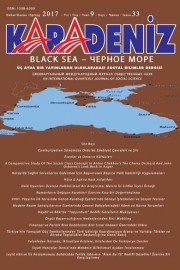Hayâlî ve Bâkî’de “Tapşurdum” Redifli Gazellerin Mukayesesi
A Comparative of Ghazals Ended With Repeated Word “Tapshurdum” by Hayâlî and Bâkî
Author(s): Hanzade GüzeloğluSubject(s): Turkish Literature, 16th Century, The Ottoman Empire, Theory of Literature
Published by: Kültür Ajans Tanıtım ve Organizasyon
Keywords: Hayâlî; Bâkî; ghazal; ghazal ended with repeated word/redif “tapshurdum”; rhytme;
Summary/Abstract: As it known, pronunciational attractive of Ottoman poetry belongs to rhyme/redif, as well. The repeated word (redif), found out by the poet, must be impressive, remarkable and enough attractive to be the pivot of meaning of the poetry. In Hayâlî’s Divân there are two ghazals versed with the rhyme/redif “tapshurdum”, which is considered as an archaic word. As one more ghazal with repeated word “tapshurdum” edded among the poems belong to Hayâlî, founded out from a Majmua of Poetry, in total there are three ghazals with thise redif written by the poet. There is a ghazal written by Bâkî, a contemporary poet with Hayâlî. Bâkî and Hayâlî are important poets of Classical Turkish Literature, lived in XVIth century. Both of them in addition to their poetry, are two important poets, who impressed on the other Turkish poets. In this paper, three ghazals with redif “tapshurdum” of Hayâlî and one ghazal with the same redif of Bâkî are trying to examined in aspect of rhyme, vocabulary, theme and the elements, which consider attractive of meaning and voice of poetry. The similarities and differences between those ghazals, versed in the same redif, rhyme, meter and theme; and from thise point the characteristic way of saying of both poets is trying to be shown.
Journal: Karadeniz Uluslararası Bilimsel Dergi
- Issue Year: 2017
- Issue No: 33
- Page Range: 159-182
- Page Count: 24
- Language: English

